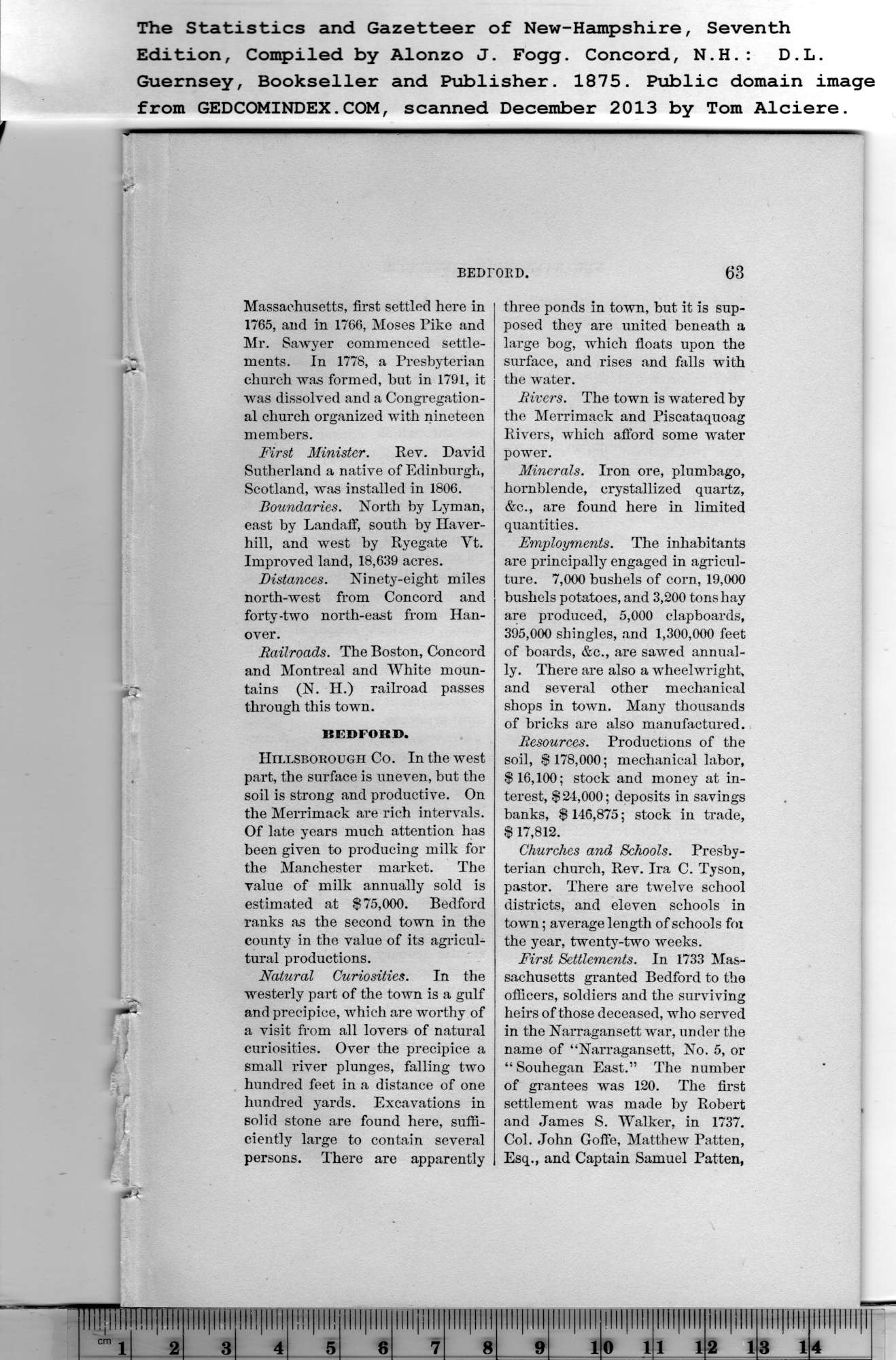|
Massachusetts, first settled here in
1765, and in 1766, Moses Pike and
Mr. Sawyer commenced settle-
ments. In 1778, a Presbyterian
church was formed, but in 1791, it
was dissolved and a Congregation-
al church organized with nineteen
members.
First Minister. Rev. David
Sutherland a native of Edinburgh,
Scotland, was installed in 1806.
Boundaries. North by Lyman,
east by Landaff, south by Haver-
hill, and west by Ryegate Vt.
Improved land, 18,639 acres.
Distances. Ninety-eight miles
north-west from Concord and
forty-two north-east from Han-
over.
Railroads. The Boston, Concord
and Montreal and White moun-
tains (N. H.) railroad passes
through this town.
BEDFORD.
Hillsborough Co. In the west
part, the surface is uneven, but the
soil is strong and productive. On
the Merrimack are rich intervals.
Of late years much attention has
been given to producing milk for
the Manchester market. The
value of milk annually sold is
estimated at $75,000. Bedford
ranks as the second town in the
county in the value of its agricul-
tural productions.
Natural Curiosities. In the
westerly part of the town is a gulf
and precipice, which are worthy of
a visit from all lovers of natural
curiosities. Over the precipice a
small river plunges, falling two
hundred feet in a distance of one
hundred yards. Excavations in
solid stone are found here, suffi-
ciently large to contain several
persons. There are apparently
three ponds in town, but it is sup-
posed they are united beneath a
large bog, which floats upon the
surface, and rises and falls with
the water. |
Rivers. The town is watered by
the Merrimack and Piscataquoag
Rivers, which afford some water
power.
Minerals. Iron ore, plumbago,
hornblende, crystallized quartz,
&c., are found here in limited
quantities.
Employments. The inhabitants
are principally engaged in agricul-
ture. 7,000 bushels of corn, 19,000
bushels potatoes, and 3,200 tons hay
are produced, 5,000 clapboards,
395,000 shingles, and 1,300,000 feet
of boards, &c., are sawed annual-
ly. There are also a wheelwright,
and several other mechanical
shops in town. Many thousands
of bricks are also manufactured.
Resources. Productions of the
soil, $178,000; mechanical labor,
$ 16,100; stock and money at in-
terest, $24,000; deposits in savings
banks, $ 146,875; stock in trade,
$ 17,812.
Churches and Schools. Presby-
terian church, Rev. Ira C. Tyson,
pastor. There are twelve school
districts, and eleven schools in
town; average length of schools foi
the year, twenty-two weeks.
First Settlements. In 1733 Mas-
sachusetts granted Bedford to the
officers, soldiers and the surviving
heirs of those deceased, who served
in the Narragansett war, under the
name of “Narragansett, No. 5, or
“ Souhegan East.” The number
of grantees was 120. The first
settlement was made by Robert
and James S. Walker, in 1737.
Col. John Goffe, Matthew Patten,
Esq., and Captain Samuel Patten, |
